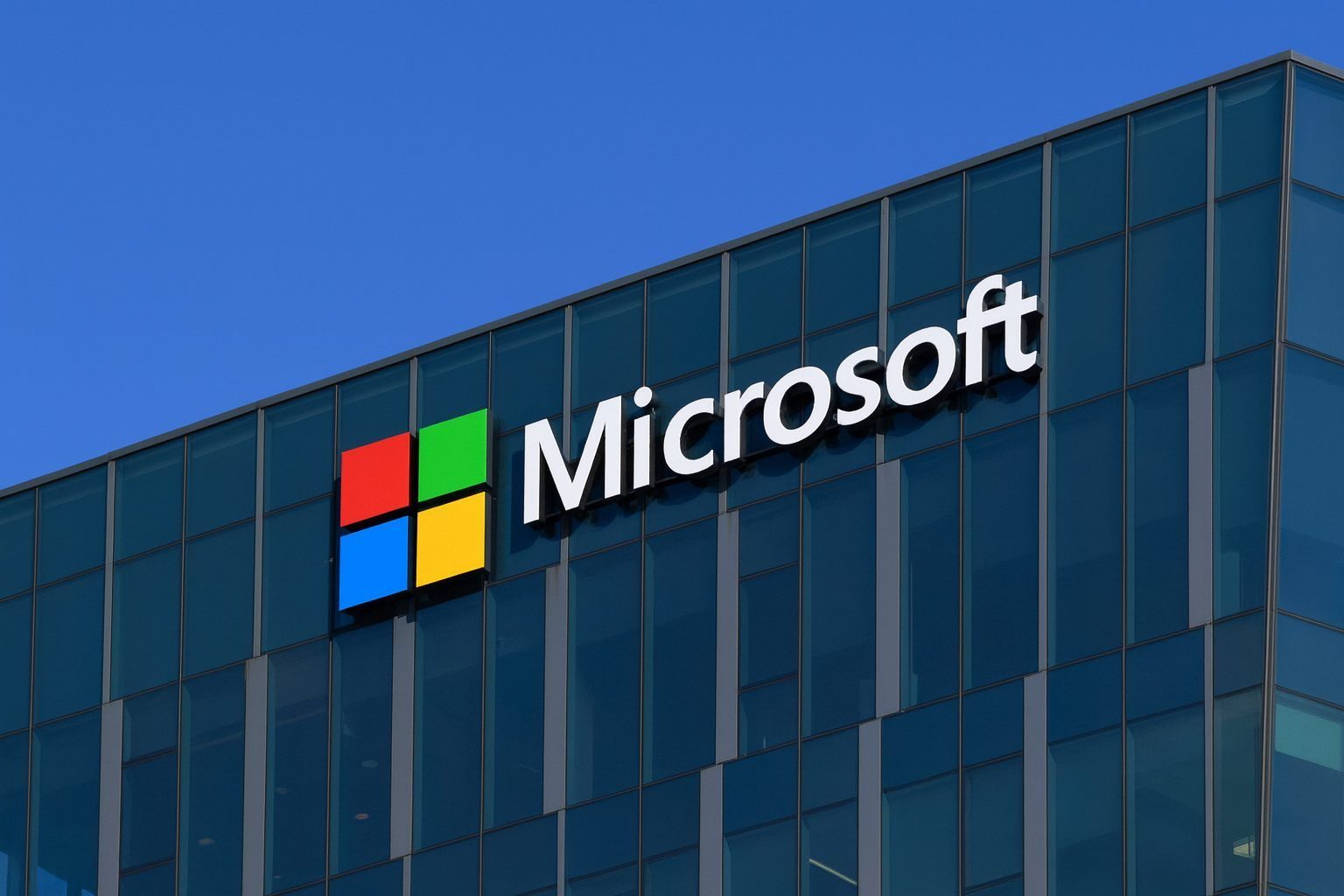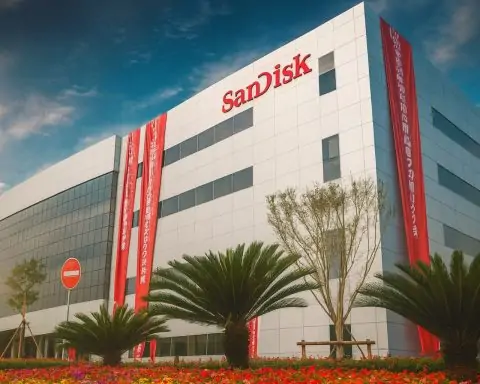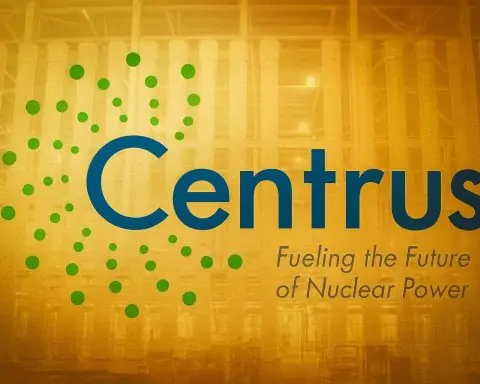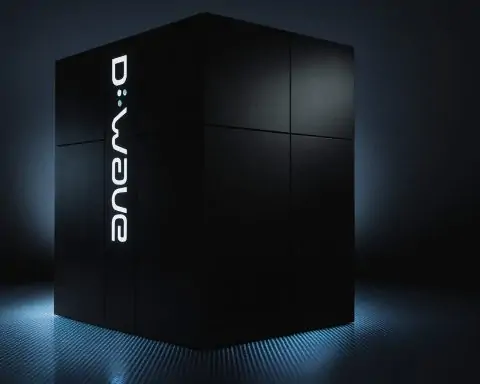Microsoft Corporation (NASDAQ: MSFT) is edging higher today as Wall Street digests a flood of new AI‑related deals, analyst calls and sustainability news that reinforce the long‑term growth story—even as the stock is still nursing a double‑digit pullback since earnings.
Microsoft stock price on November 24, 2025
Microsoft is trading modestly higher in Monday’s session after a rough stretch following its fiscal Q1 2026 results.
- Intraday price: MSFT is changing hands around $474 per share, up slightly on the day. Real‑time data show an intraday range roughly between $472 and $476. [1]
- Previous close: Microsoft finished the prior session at about $472.12, capping a week of declines from above $500 earlier in November. [2]
- Valuation today: At current levels, Microsoft’s market capitalization is roughly $3.85 trillion, with a price‑to‑earnings ratio near 36.7 based on trailing EPS of about $14.06.
A recent performance recap from Finviz/Insider Monkey notes that MSFT has fallen more than 12.8% since reporting fiscal Q1 2026 earnings, even though analysts remain broadly positive about the stock. [3]
In other words: Microsoft is trading off recent highs but still at a rich multiple, and today’s move is about whether new AI and cloud headlines justify that price.
Anthropic’s $30 billion Azure commitment: a landmark AI cloud deal
The most important Microsoft story today revolves around AI infrastructure and a major expansion of its relationship with Anthropic.
A new analysis from Insider Monkey (via Finviz) and a Motley Fool piece shared on Sharewise outline the key terms of a three‑way partnership between Microsoft, Nvidia and Anthropic: [4]
- Anthropic will purchase about $30 billion of Azure cloud capacity, scaling its Claude AI models on Microsoft’s cloud.
- Those Claude workloads are expected to run on Nvidia’s Grace CPUs and its latest Blackwell and Vera Rubin GPUs, deployed on Azure.
- Microsoft plans to invest more than $5 billion in Anthropic as part of the broader agreement, alongside Nvidia’s own stake. [5]
- The companies will effectively become mutual strategic customers and partners, tying Anthropic’s model roadmap tightly to Azure.
Commentary around the deal emphasizes a few big implications:
- Diversifying beyond OpenAI
Microsoft has already made massive bets on OpenAI. Backing Anthropic as well gives it a second major frontier AI partner, reducing reliance on a single model provider and positioning Azure as a neutral “home” for multiple foundation models. [6] - Locking in future AI demand for Azure
A $30 billion compute commitment plus plans to add another gigawatt of capacity signal that Anthropic expects to train and serve extremely large models on Azure for years, creating a long, visible revenue tail for Microsoft’s cloud segment. [7] - Deepening the Microsoft–Nvidia alliance
By explicitly centering the partnership on Nvidia’s high‑end AI hardware, the deal underlines how closely Microsoft’s AI strategy is tied to Nvidia’s chips, even as Microsoft also explores its own custom silicon. [8]
Taken together, this is one of the clearest signs yet that Azure is competing at the very top tier of AI infrastructure, alongside the largest cloud and chip players.
Analysts stay bullish despite a 12% post‑earnings slide
Despite the recent pullback, Wall Street’s stance on Microsoft is firmly positive—and this is another key theme in today’s news cycle.
BMO Capital: Outperform, $625 target
Investing.com reports that BMO Capital reiterated its Outperform rating and $625 price target on Microsoft after attending the company’s Ignite conference. [9]
BMO highlighted:
- Microsoft’s strong positioning in both emerging AI markets and its legacy software franchises.
- Annual revenue of about $293.8 billion, growing 15.6% year over year, underscoring that the company is still expanding at a healthy clip for its size. [10]
- A view of Microsoft as both an “emerging agentic super store” for AI tooling and a “low‑cost provider” (likened to Costco) for existing productivity and cloud services—meaning it can monetize both high‑end AI and everyday enterprise workloads. [11]
Other banks: Jefferies, UBS, Stifel, Evercore ISI
The same report notes that several other firms have recently reaffirmed bullish calls: [12]
- Jefferies: Buy, $675 price target, citing accelerating enterprise adoption of Microsoft Copilot.
- UBS: Buy, $650 target, after discussions at Ignite where Azure’s AI capacity and growth trajectory were a major focus.
- Stifel: Buy, $640 target, pointing to growing Copilot momentum.
- Evercore ISI: Outperform, $640 target, also tied to Microsoft’s AI strategy and Ignite takeaways.
Finviz’s summary of an Insider Monkey piece adds more color: analysts see Azure revenue growth potentially in the high‑30% to low‑40% range in 2026, with non‑GAAP EPS growth of roughly 20–25%, and justify price targets like $650 using 50x multiples of 2027 free cash flow. [13]
At the same time, that article notes that Microsoft still trades at about 42× forward free cash flow and 25× non‑GAAP EPS, even after the post‑earnings drop—so the bullish thesis assumes AI‑driven growth can sustain those rich valuations. [14]
Is Microsoft stock overvalued? GuruFocus calls it “fair” on earnings, rich on cash flow
For investors trying to decide whether MSFT is expensive or justifiable at current levels, a new discounted cash flow (DCF) analysis from GuruFocus is getting attention today.
The GuruFocus piece, “Beyond Market Price: Uncovering Microsoft Corp’s Intrinsic Value,” estimates: [15]
- Intrinsic value (earnings‑based DCF):$454.72 per share
- Market price used in the model:$472.12
- Margin of safety: about ‑3.8%
Based on this earnings‑based discounted‐earnings model, the article concludes Microsoft is essentially “fair valued”—not a screaming bargain, but not wildly overpriced either, assuming the growth assumptions play out.
However, the same article runs a traditional free‑cash‑flow DCF:
- Intrinsic value (FCF-based):$221.40 per share
- Implied margin of safety: roughly ‑113%
On that basis, GuruFocus argues that Microsoft looks “significantly overvalued”, highlighting how sensitive valuation is to whether you lean on earnings or free cash flow, and how optimistic long‑term growth and discount‑rate assumptions must be to justify current prices. [16]
The key takeaway: even among valuation models, there’s disagreement, and today’s ~36–37× earnings multiple leaves only a slim margin for error if AI growth underdelivers.
Azure’s AI ecosystem keeps expanding: VAST Data, New Relic and ServiceNow
Beyond high‑profile model deals, several infrastructure and ecosystem announcements today reinforce Microsoft’s ambition to be the operating system of the AI era.
VAST Data + Microsoft: an AI OS for Azure
TechAfrica News reports that VAST Data’s AI Operating System (VAST AI OS) will be available on Microsoft Azure, offering a unified data and compute platform for large‑scale AI workloads. [17]
Key points from the announcement:
- VAST AI OS will run natively on Azure infrastructure, using Azure’s latest VM series to keep GPU and CPU clusters saturated with data.
- Enterprises get unified storage, data cataloging and database services across on‑prem, hybrid and multi‑cloud environments, with an exabyte‑scale “DataSpace” to eliminate data silos.
- The platform is explicitly designed for “agentic AI”, providing components like InsightEngine and AgentEngine to power vector search, retrieval‑augmented generation (RAG) and autonomous agents at scale. [18]
For Microsoft, this positions Azure as a high‑performance home for advanced AI data platforms, not just raw compute.
New Relic + Azure: agentic AI observability
ChannelE2E covers another AI‑heavy integration: New Relic has rolled out agentic AI observability features for Microsoft Azure. [19]
Highlights:
- New Relic’s Model Context Protocol (MCP) Server now integrates directly with Azure Monitor, the Azure SRE Agent and Microsoft Foundry.
- The goal is to cut mean time to resolution (MTTR) by bringing telemetry, AI insights and actionable recommendations directly into Azure workflows, so engineers can diagnose and fix issues faster.
- Azure SRE Agent can query New Relic for real‑time snapshots during incidents, and Foundry developers get live logs and metrics for AI apps and agents. [20]
This speaks to a big theme for AI infrastructure: it’s not just about GPUs; it’s about tools that keep AI systems observable, governable and safe in production.
ServiceNow deepens its Microsoft integration
A fresh Zacks Analyst Blog—also republished via Nasdaq—highlights how ServiceNow is expanding integrations with Microsoft’s AI stack: [21]
- A new tie‑in with Microsoft Agent 365 aims to orchestrate and govern AI agents across Microsoft 365, Copilot, Foundry and GitHub.
- ServiceNow’s AI Control Tower will integrate with Microsoft Foundry and Copilot Studio, giving enterprises a centralized way to govern AI agents running on Microsoft platforms.
- ServiceNow Build Agent now integrates with GitHub’s Model Context Protocol server, enabling more secure, policy‑aware access to GitHub issues and pull requests.
From Microsoft’s perspective, these integrations make Azure and the broader Microsoft Cloud stickier by embedding its services in the workflows of major enterprise platforms like ServiceNow.
Sustainability and power: a 95.7 MW solar deal in Spain
Not all of today’s Microsoft news is purely about AI. One notable deal touches on energy, ESG and Microsoft’s datacenter footprint.
Renewables Now reports that Microsoft has signed a power purchase agreement (PPA) with Spanish renewable developer Zelestra: [22]
- Microsoft will contract the output of two solar farms under construction in Aragon, Spain, with a combined capacity of 95.7 MW.
- The projects—Escatron II and Fuendetodos II—include a community benefit initiative led by local non‑profit ECODES, funding programs focused on vulnerable groups and sustainable infrastructure.
- The PPA supports Microsoft’s carbon‑negative goals and its Datacenter Community Pledge, tying renewable energy procurement directly to local community development.
For shareholders, this underscores that Microsoft’s AI and cloud expansion is tightly linked to large power contracts, and that the company is trying to frame those deals within a broader sustainability narrative.
What today’s news means for Microsoft stock
Putting the day’s headlines together, the Microsoft story on November 24, 2025 looks something like this:
Bullish forces
- Azure’s AI moat is deepening.
The Anthropic–Nvidia deal, plus a stream of ecosystem partnerships (VAST Data, New Relic, ServiceNow), strengthens the view of Azure as a top‑tier AI cloud with rich tooling and model diversity, not just a generic compute platform. [23] - Wall Street is largely on board.
BMO, Jefferies, UBS, Stifel and Evercore ISI all maintain Buy/Outperform ratings with targets mostly in the $625–$675 range, and consensus remains in “strong buy” territory despite the post‑earnings pullback. [24] - Microsoft remains a profit machine.
GuruFocus’ earnings‑based DCF and CoinCentral’s ranking of Microsoft among the most profitable mega‑cap tech stocks both reinforce that this is still a high‑margin, high‑return business with substantial cash generation. [25] - ESG and power strategy support the long game.
Deals like the 95.7 MW Spanish solar PPA show Microsoft proactively securing cleaner power for its datacenters, which matters as AI workloads become increasingly energy‑hungry and regulators scrutinize carbon footprints. [26]
Key risks and pressure points
- Valuation risk is real.
Even after a drop of more than 12% since Q1 results, Microsoft still trades at rich earnings and cash‑flow multiples, and some DCF models (especially those based on free cash flow) see the stock as significantly overvalued. [27] - AI capex and “AI debt” worries.
Bloomberg and others have flagged a wave of Big Tech bond issuance to fund AI infrastructure, warning that heavy borrowing for data centers and GPUs could strain credit markets. Microsoft is part of that broader story, and investors will watch closely to see whether AI revenue growth keeps up with AI spending. [28] - Execution risk in AI partnerships.
Deals with Anthropic, Nvidia, VAST and ServiceNow are powerful on paper, but they require flawless execution at massive scale—from building out data centers to managing complex multi‑party relationships and keeping AI systems reliable and secure. [29] - Earnings expectations are high.
After fiscal Q1 2026, Microsoft stock sold off when investors focused on rising AI capex and margin pressure, reminding the market that even strong results can disappoint when expectations are sky‑high. [30]
Overall, today’s news reinforces the long‑term AI‑driven bull case for Microsoft while also underlining that the stock already reflects a lot of future success.
What investors will be watching next
Looking beyond today’s modest gain, here are the big things market participants are likely to track:
- Concrete financial impact of the Anthropic deal
How quickly does that $30 billion Azure commitment show up in segment revenue and backlog figures? Does Microsoft break out more details in upcoming earnings? [31] - Azure and Copilot growth rates
Analyst models banking on high‑30% Azure growth and strong Copilot adoption will be tested over the next several quarters. Any slowdown could force target price revisions. [32] - AI capex vs. free cash flow
With GuruFocus’ FCF‑based DCF flashing “overvalued,” investors will watch whether free cash flow per share accelerates enough to close that gap as AI investments mature. [33] - Regulatory and competitive landscape in AI
As Anthropic, OpenAI, Google, Amazon and others race ahead, Microsoft must navigate antitrust scrutiny, AI safety rules and intense competition—all while maintaining its lead in enterprise software. [34]
Important note
This article is for informational and educational purposes only and does not constitute financial, investment or trading advice. Microsoft stock can be volatile and carries market, competitive and regulatory risks. Anyone considering an investment in MSFT or any other security should do independent research and, where appropriate, consult a qualified financial adviser.
References
1. robinhood.com, 2. www.investing.com, 3. finviz.com, 4. finviz.com, 5. finviz.com, 6. timesofindia.indiatimes.com, 7. finviz.com, 8. www.sharewise.com, 9. www.investing.com, 10. www.investing.com, 11. www.investing.com, 12. www.investing.com, 13. finviz.com, 14. finviz.com, 15. www.gurufocus.com, 16. www.gurufocus.com, 17. techafricanews.com, 18. techafricanews.com, 19. www.channele2e.com, 20. www.channele2e.com, 21. www.nasdaq.com, 22. renewablesnow.com, 23. finviz.com, 24. www.investing.com, 25. www.gurufocus.com, 26. renewablesnow.com, 27. finviz.com, 28. themalaysianreserve.com, 29. finviz.com, 30. www.investors.com, 31. finviz.com, 32. finviz.com, 33. www.gurufocus.com, 34. khanfk.medium.com










